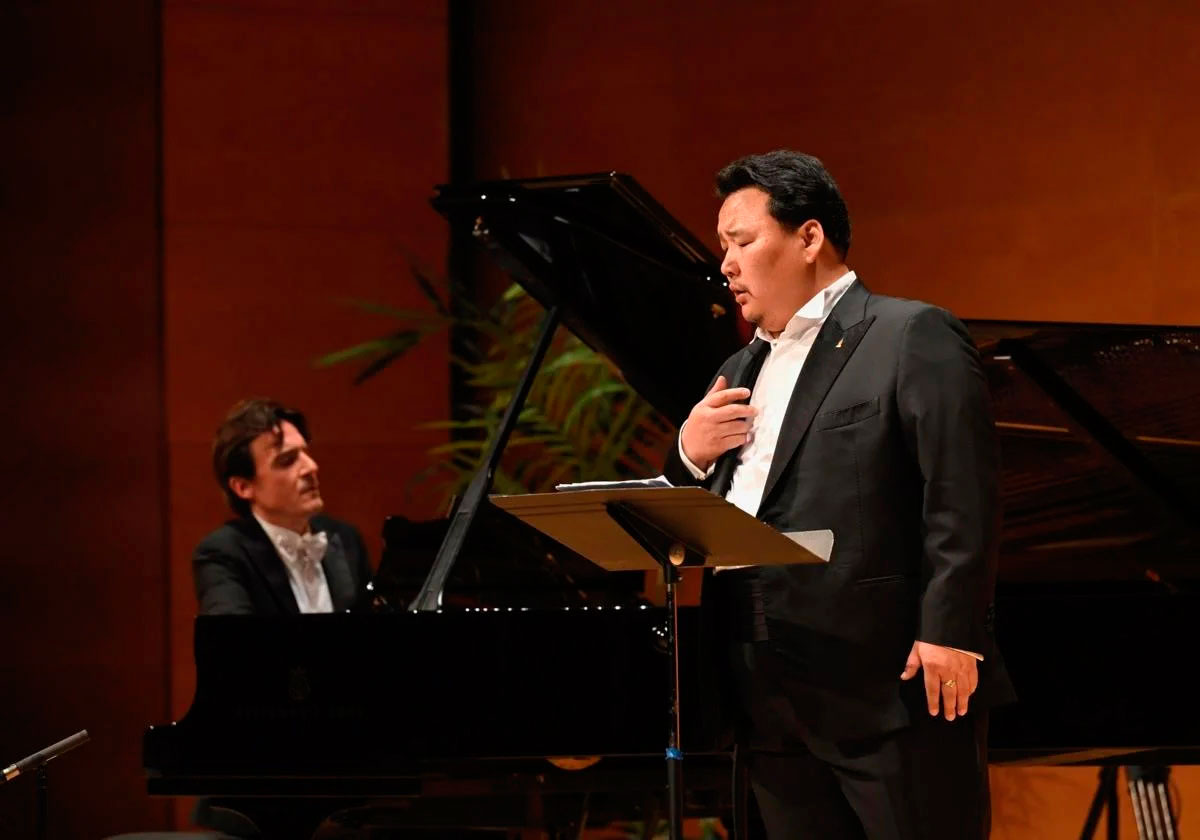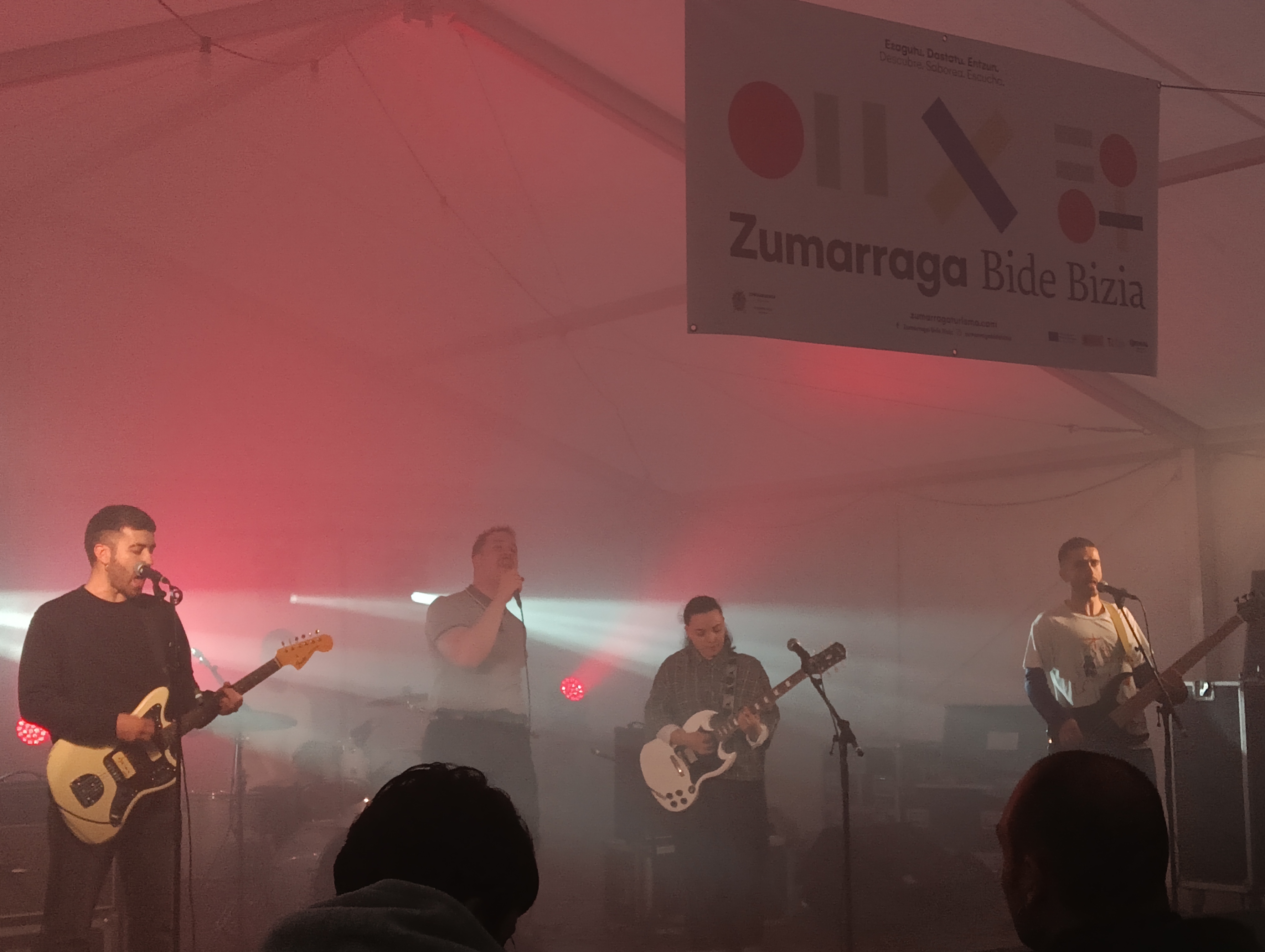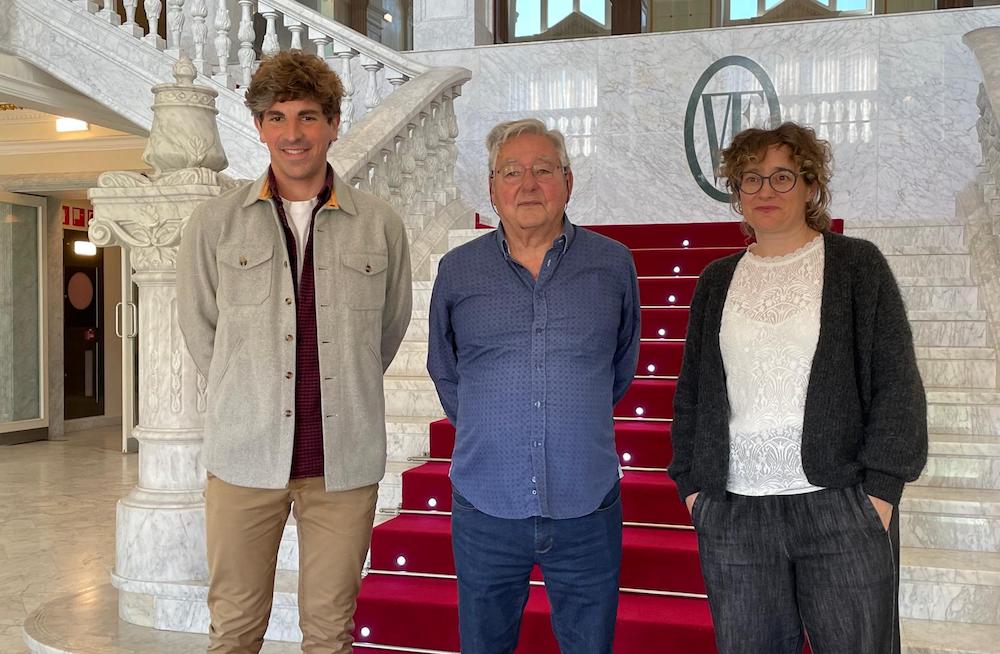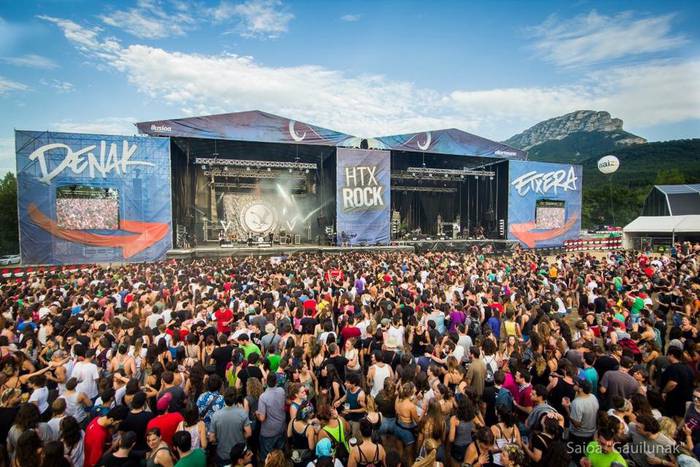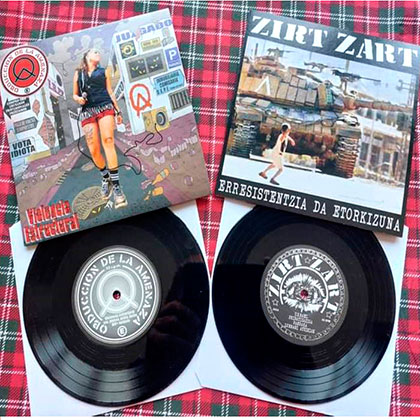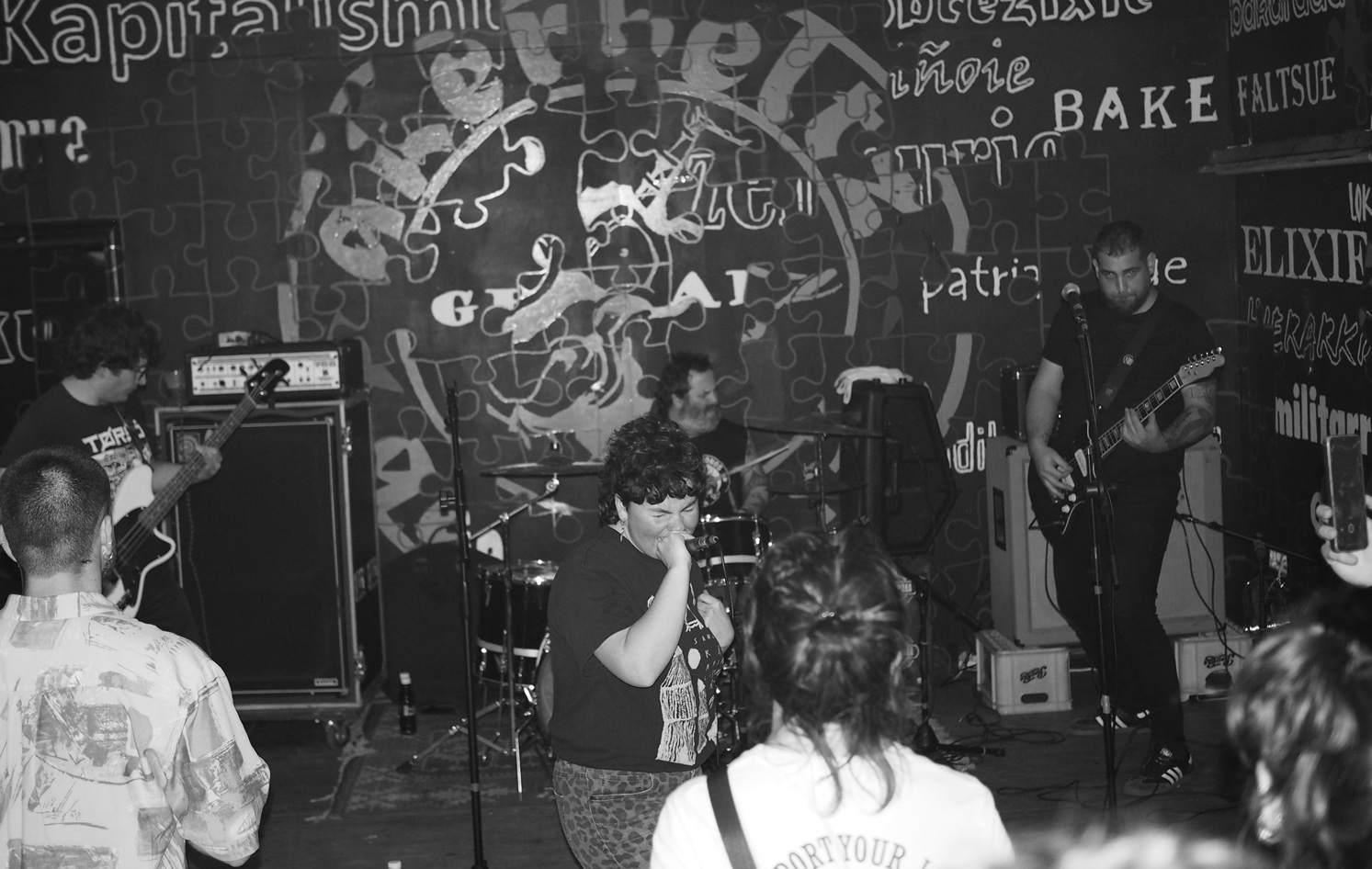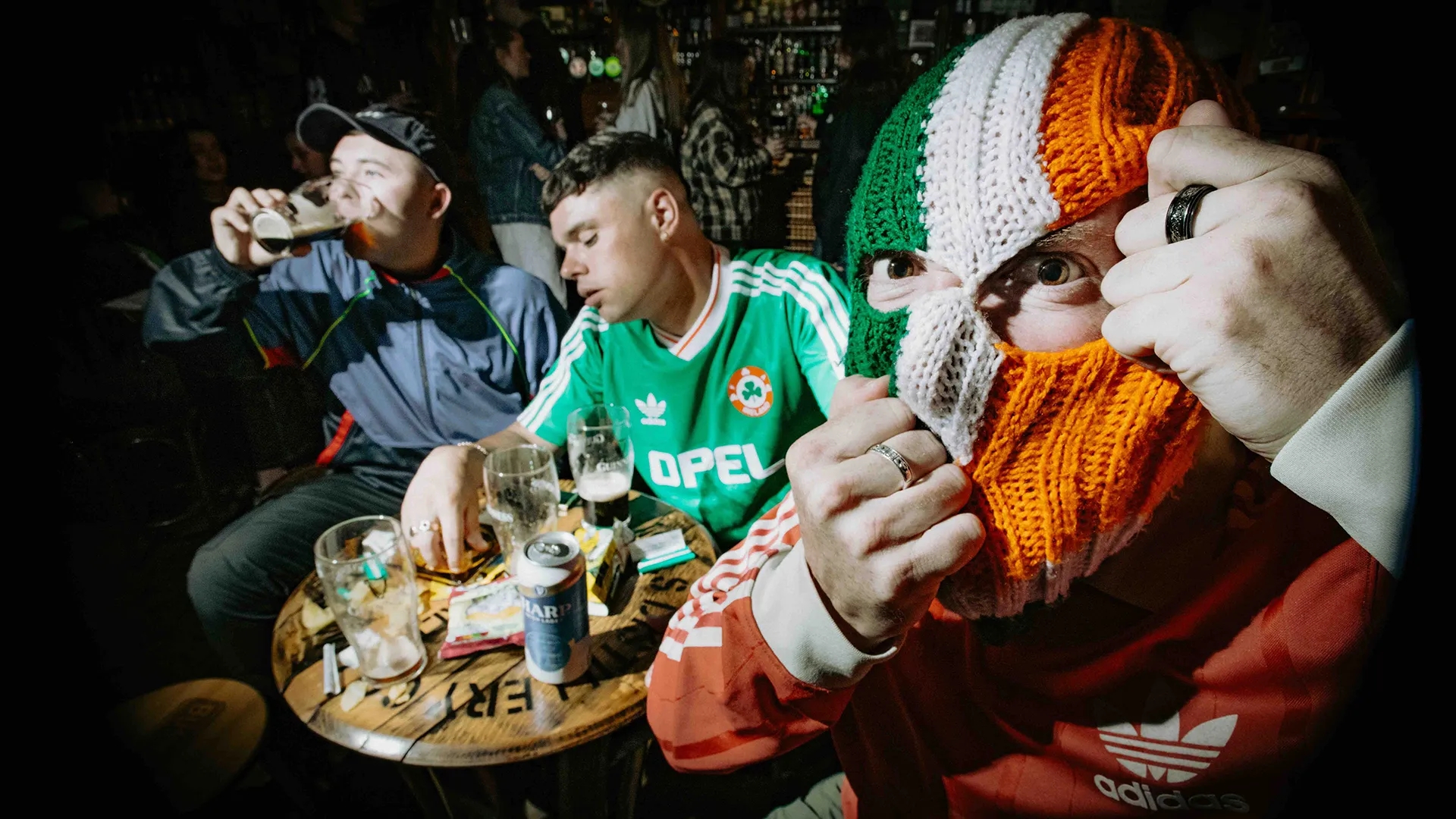"We want to talk about electronics with those who don't feel called to create songs."
- A workshop on electronics can be designed in a thousand ways. You can teach to use the regular software or create the tools you need. It can be limited to pure technique, or it can contextualize sounds. You can either accept the history of electronics as such or try to focus the voices on the edge. The members of the School of Electrosound Trades of Madrid try to teach visions beyond conventional guides.
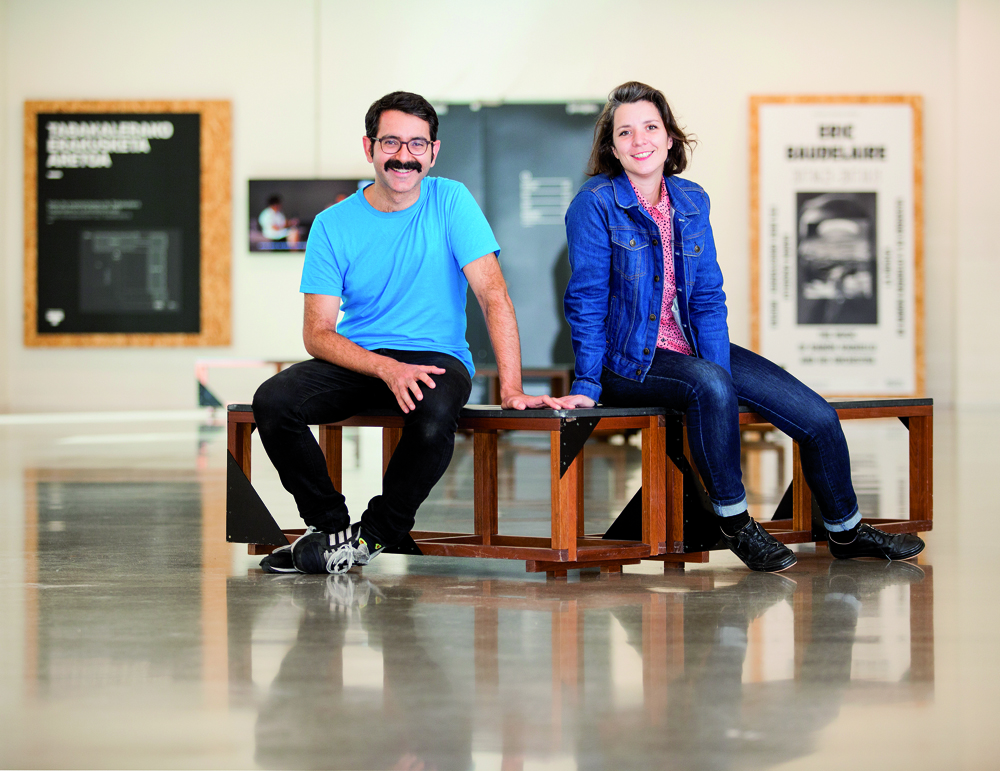
Jesus Jara and Patricia Raijenstein complement each other. He studied computer music in Germany, and upon his return he realized that there was almost no workshop in which he was taught to make electronic music. So he came up with the idea of creating the School of Electrosound Trades. “The name means we work technology, sound and electronics, but we’re not just a DJ school that makes music for dance. Likewise, the word trade has a popular connotation, it makes a gesture to something that is understandable to all”. When designing the project, he contacted Raijenstein, who introduced other layers such as gender or artistic education. Between the two, they have conducted a multidisciplinary course.
Why did you create such a course?
Jesus Jara: When you start analyzing the history of electronics, you realize that there are no women anywhere. As it would be unforgivable to make the same mistake in our course, we decided to put women in the center. So we teach music using technology, but based on the work of women who have been key to the development of electronics. We tell the lives of six women we have called “pioneers”, explaining why they were so important, what they contributed…
Patricia Raijenstein: We want to bring to light those other stories that have no place in official history, because a lot of people feel identified with them and serve to empower them. There are a lot of pioneering women, but at the moment we have based ourselves on six. Pauline Oliveros, for example, invented the concept of deep listening because it talks about listening, denaturalizing sound, even for those who are not musicians. That's where new possibilities of tonality arise for electronics, and you suddenly learn to listen in a different way. Also notable is Wendy Carlos, who made the soundtrack of the film A Clockwork Orange, mixing traditional classical music with synthesizers.
J. Jara: Take Sister Rosetta Tharpe. Precursor of rock’n’roll and also black.
P. Raijenstein: Another is Delia Derbyshire, a wonderful music that made the intruder of the Dr. Who series, modeling sounds with magnetic tape. Or Baby Barron, which was made up of the machines built by her husband Luis Barron.
You also attach importance to manpower. In the course, you teach yourself how to make basic synthesizers.
J. Jara: In the electronic scene a certain figure of the musician stands out: man, Western, white, heterogeneous and without any dysfunction. The tools that are used, almost always, are made of private software, expensive, inaccessible to many. And few of them work transparently, explaining how they've come to do what they do. We claim the opposite of this model. Make your own tools yourself and make experimentation a part of the process of creating electronic music.
Jesus Jara:
“We have to learn to listen at all levels, if you don’t look at the Trump/Catalunya–Madrid relationship”
P. Raijenstein: We are interested in these ideas: The Do It Yourself, personal empowerment… When talking to technology, it is essential to know that there will always be a moment of frustration, but sharing with others that you can cope with it. Wrong is a way to experiment and to reach other places. The error is very nice, because from there you can understand the music as never understood from the solfeo or the academy. We prefer to learn intuitive and collaborative, rather than based on extreme demand or criminalization. We also want to break dichotomies: body and intelligence, experts and amateurs, men and women, theory and practice…
I have remembered listening to you the documentary Europe in 8 bits. There are European musicians who build instruments by recycling artifacts and creating chiptunes such as old video consoles.
P. Raijenstein: It is not just a European movement. In South America, for example, in Colombia, there's a tremendous, very poetic, noise scene, by the way. I'm very interested in the poetic view of technology, because, despite being a concrete scientific thought, it creates new opportunities to relate to others.
J. Jara: Chilean artist Corazón de Robota recalled that the world is full of artistic currents and that it is now more valuable than ever to find its own way of making music. Our line coincides with this idea. We don’t teach electronics using the Ableton Live app, because the tool itself conditions many things: buying a certain technology, spending money… On the contrary, if you make what you need yourself, it will surely be easier for you to find a different voice from the rest of your own.
P. Raijenstein: Surely not all the participants in the course will finish making music, but along the way they will find new ways. And another fundamental issue: listening. We live in an audiovisual world and visual vision is very interesting, but perhaps we should pay more attention to listening to ourselves and others.
The first exercise of the course has been listening to the sounds of the environment, if I am not mistaken. What is the relationship between active listening and electronic music?
J. Jara: We have to learn to listen at all levels. Look, if not, at Donald Trump, or Catalonia and Madrid. Also in the artistic sphere. We must open our minds and ears so that we do not first judge the sounds that come to us. In the workshops with young people that we do in Madrid we put a mashup of pop songs that you've heard a thousand times, so you know that you haven't been listening to music, but lyrics. You've never looked at the sound richness of these songs. The active listening exercises we perform at the beginning of the courses also go in that line. They open our minds and we start to hear sounds that we don’t usually hear: some louder, others more intense, more demanding… Sounds that can never be found in a measured and calculated production of Rihanna.
P. Raijenstein: The key is learning to recognize the sounds around us. Listening exercises help to better understand the soundscape of the environment, to find unprecedented rhythms, to value the acoustic ecology of cities… And, of course, to better value the musical pieces that supposedly are for the cultured public.
Active listening, acoustic ecology… are concepts that are rarely mentioned in conventional musical teaching.
J. Jara: In the conservatory, listening is a tool to better understand the piece you're interpreting. It all depends on interpretation. On the other hand, Pauline Oliveros proposes that the listener is also part of the play, as he is listening. This concept of listening goes beyond interpretation. And if you step out of the framework of traditional music, or what to say, there's no regulated or regulated education that forces you to hear the sound of a train or the sound of a city, except the R. Some experiments were done by Murray Schafer.
Patricia Raijenstein: “The educational model is a fundamental and not just a music problem”
P. Raijenstein: Well, even Oliveros has done something. But the underlying problem is the educational model. Students have to listen to the teacher, but not the other way around. This hierarchical and passive education is a lack of respect towards the students. We come from activism and innovative contemporary education, and it seems essential to us to listen to the students. The information that can be in a class is very varied. We have one piece of information, each student has another, it's very valuable, and it would be a shame to lose it because we just have to talk more. Listening to all the participants, the classes get very rich, they adopt a lot more nuances. Instead of a static block, they become something more adaptable.
Electronic music has often been associated with the nighttime environment and drugs. I mean, pure entertainment. Do you want to oppose this prejudice?
J. Jara: Totally. The project is based on making electronic music as accessible as possible to all, because as a culture it is a universal right. This point of view is also important when it comes to the history of electronics: if one night they came together in a nightclub to bring together a group of people and do something innovative, that is part of the history of music in this country, and it should be understood as a cultural fact, not just as something made by outdated ones to have fun.
P. Raijenstein: Electronics is a contemporary culture. Then it is true that the account has many edges, because for example, electronic music is associated with the LGTBQ community with the nighttime environment, they understand it as a tool to build identity.

To analyze why electronics have had such a late success in Euskal Herria for a thesis. The stigma it has in itself receives other connotations in a conflict situation.
P. Raijenstein: My memories of the electronic scene here are from a very underground environment. Something similar happened with “The Cod Route”. It was an interesting sound movement, but gradually it became massive and stigmatized. People drove from a discotheque to a completely drugged one, and of course, many died on the road. Icons like Chimo Bayo emerged there. For some it is a genius and for others it is the opposite. But in that atmosphere, for example, there was a great influence of Kraftwerk. And if you look at it from an artistic point of view, beyond the drugs issue, very interesting sounds emerged and also very strong community spaces.
What plans do you have?
J. Jara: We start from the gender perspective, but as we seek diversity, we have more lines. We're analyzing the development of electronic music in the LGTBQ community and how, to some extent, electronics belong to them since their origins, because of the gay blacks who moved in the first clubs in Chicago. Likewise, we want to bring electronics closer to people with functional diversity and find other pioneers that, as we have found women pioneers, serve as a model. After all, we want to talk about electronics with those people who don't feel called to create songs.
P. Raijenstein: Culture, music and history create identities, new possibilities of being. Therefore, the creation of new genealogy in the history of electronic music is an opportunity to create more diverse identities.
J. Jara: We have also contacted the Arab House of Madrid, because we want to find referents beyond Europe and the United States, to work with people outside Western culture. We need to approach with less ambition and more respect. Let us analyse what expressions of electronic music exist in the Arab countries and what similarities they have with those of Europe. We know, for example, that on the issue of feminism we cannot go with our Western schemes.
P. Raijenstein: The Arab world is highly stigmatized and stereotyped. We need to look more at some Arab feminists. More than ever, it is up to us to listen, in the broadest sense of the word.
BRN + Neighborhood and Sain Mountain + Odei + Monsieur le crepe and Muxker
What: The harvest party.
When: May 2nd.
In which: In the Bilborock Room.
---------------------------------------------------------
The seeds sown need water, light and time to germinate. Nature has... [+]
Amartuvshin Enkhbat baritonoa
Pianoan: Stefano Salvatori.
Antolatzailea: OLBE.
Zer: Verdi, Mascagni, Leoncavallo eta Giordanoren operen ariak.
Non: Bilboko Euskalduna Jauregian.
Noiz: martxoaren 29an.
Aramu + AimarZ
When: April 26.
In which: The Zumarraga Open Field.
---------------------------------------------------------
The website of the City Council says: "The tourist brand Viva Viva and the festival of the same name are designed to show the world the soul of... [+]
Transparent Beings
When: April 20th.
In which: In the Plaza of the Castle of Pamplona.
-----------------------------------------------
The concert is only half an hour away in the Plaza del Castillo de Pamplona; but it is still half empty, because it is raining. Whether... [+]
Obduction of Amenaza / Zirt Zart (Split-ep)
2024
---------------------------------------------------
The musical panorama is gigantic, impassable. Among them there are a few large groups that absorb all the foci; many others that are dedicated to the pursuit of it, and... [+]
Aposapo + Mäte + Daño Dolor
When: April 5th.
In which: In the Youth Center of Markina-Xemein.
---------------------------------------------------------
I’ve made my way to the cheese house with the shopping cart full of vegetables, and we’ve spent the evening cutting... [+]
Poliorkêtês
Kerobia
Autoekoiztua, 2025
--------------------------------------------------------
Azken aldian, lerrootan asko nabil hausnartzen musikak izan beharko lukeen “misio historikoaz” eta abarrez. Eta, nolabait, zer egin beharko lukeen... [+]
On March 7, the 150th anniversary of the birth of Maurice Ravel, the best Basque composer of all time. And in LA LUZ a tribute was paid to this composer, recalling the influence of the famous Bolero on the collective imagination.
By chance, Deutsche Grammophon has just released... [+]









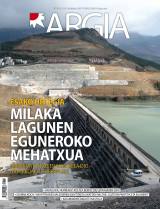

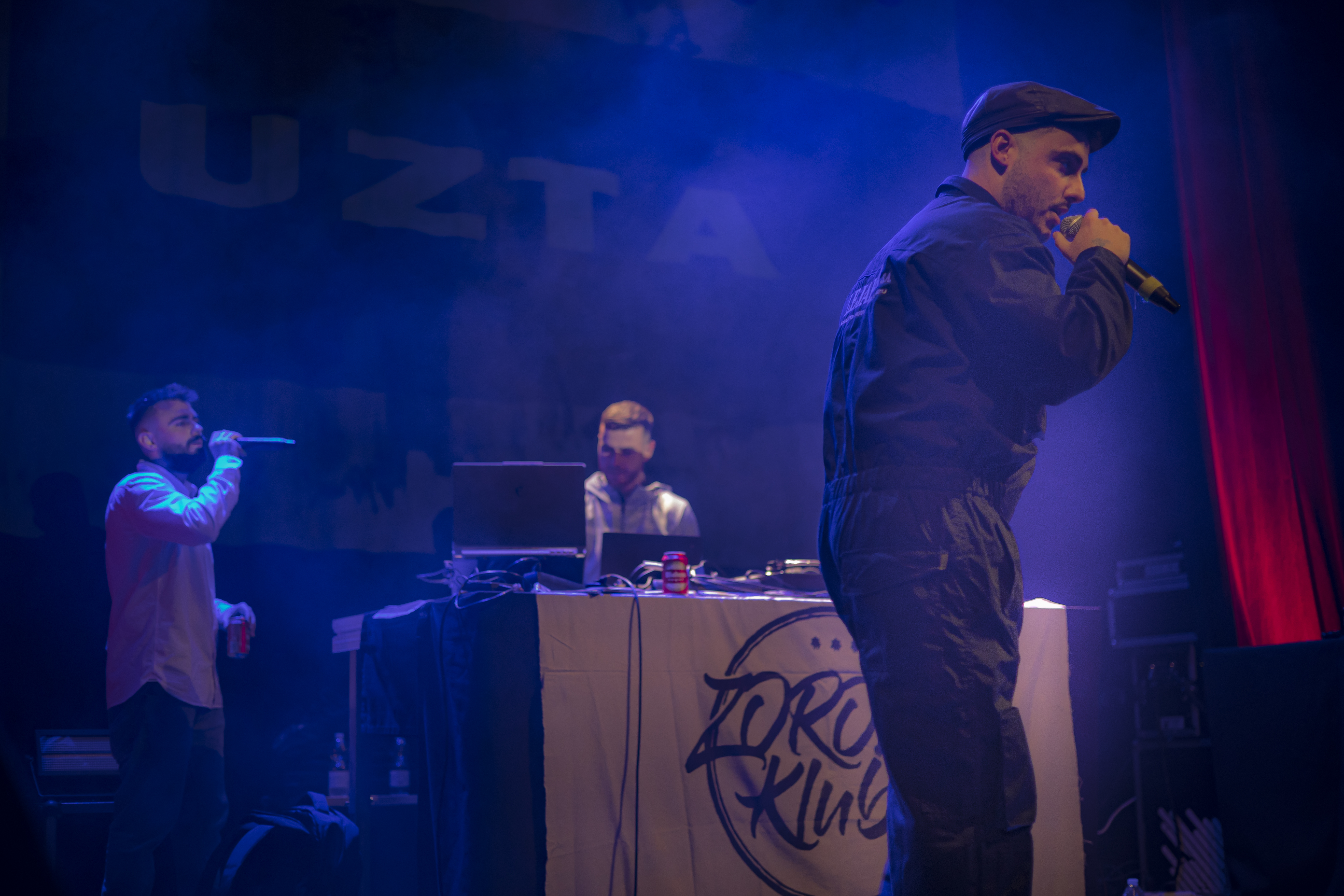
.jpg)

